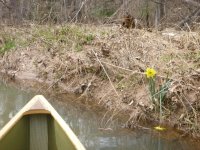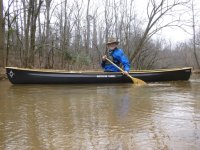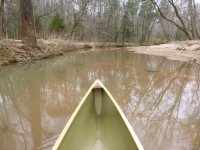I use different cameras on trips. I have an old Canon T2i, with multiple lenses, that I take on some trips (mostly those that I am paddling in and basecamping). I also have a Sony RX100 that I take on every paddling trip. It is small, fits in my PFD pocket and zooms. It shoots decent video and stills. A few years ago I started using an action camera as well, mounted on the canoe. I first purchased a $75 Akaso Brave 4. It actually took good quality video (4K) and photos. The problem was that it isn't waterproof, so it had to go in a waterproof housing if the conditions weren't ideal. A couple of years ago I was able to get a used GoPro Hero 7 Black. It had better features than the Akaso, was waterproof and most importantly, was voice-activated, so I could more easily control it while paddling. This past January, for my 70th birthday, my children got me a GoPro Hero 11 Black; it has all the features of the 7 and then some, plus better quality video. My plan going forward is to use the two GoPros on most trips, along with the Sony. I will probably use the Canon as I have been doing, just because of the range of lenses I have for it. In addition to this photo/video gear, I usually take my field recording gear with me on trips. This can be just a simple stereo microphone setup that goes in a dry bag or one with a parabolic (dish) microphone. In terms of transporting the gear, I have a waterproof dry pack that will hold the gear or I use cases from Harbor Freight. What I take and what it travels in depends on the trip.
I have always taken photos on my canoeing and backpacking trips. I became interested in doing videos after watching what others (Robin being one of them) did. I thought it would be nice to be able to watch the videos and (somewhat) relive the trips when I could no longer do them. At first I didn't publish them, but when family members and friends expressed an interest in seeing them, I have been putting them on YouTube. I also put my field recordings up on a website. I don't have a lot of subscribers and don't promote the channel and sites, which is fine, because the main audience is myself, my family and friends.
One thing that I have found since doing this is the difficulty in getting what I take on each trip edited (I use VideoPad for videos, PhotoPad for photos and WavePad for field recordings) and published. While I was working, it was nearly impossible and most of it just sat waiting on hard drives. Since retiring, I have more time to process, but I am far behind so it will take time to get up to date. I've found it nearly impossible to do much processing during the paddling season, so my plan has been to do it in the off-season. It has become an enjoyable retirement activity/project and unlike some other retired friends who don't know what to do with their time, I always have something interesting and rewarding to work on. Also, I think the challenge of figuring out the in's and out's of the software is good mental stimulation.



